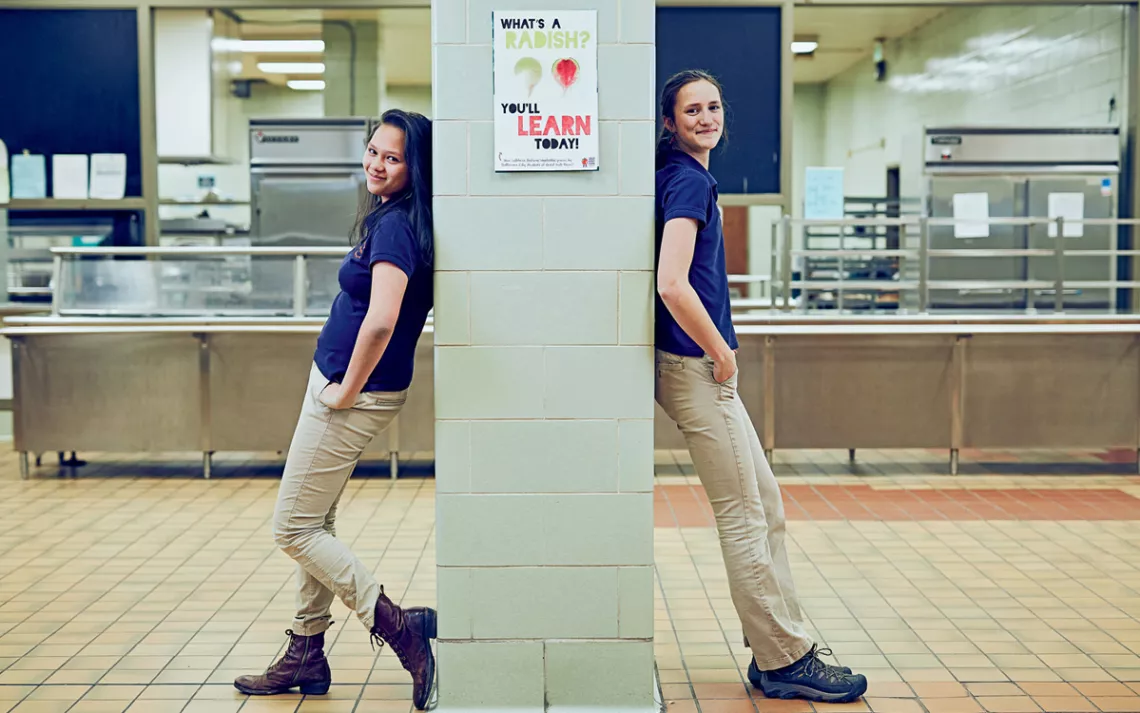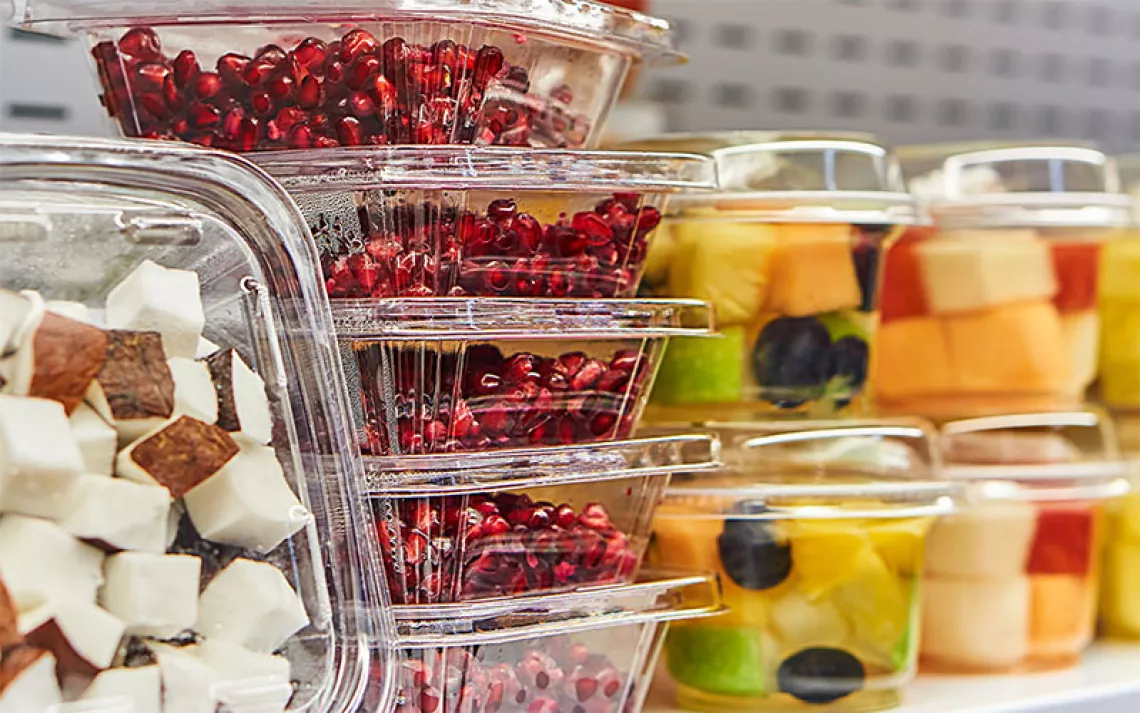These Two High Schoolers Want Baltimore to Get Over Plastic
Claire Wayner and Mercedes Thompson cofounded Baltimore Beyond Plastic

Mercedes Thompson and Claire Wayner | Photo by Ryan Smith
Claire Wayner and Mercedes Thompson got to know each other in seventh grade, when they sat next to each other in class. Thompson was interested in science and participated in summer camps at the National Aquarium. Wayner was obsessed with birds.
In high school, Wayner began an internship that focused on city-wide environmental measures. Through that, she heard about a bill in the Maryland legislature that sought to ban polystyrene foam. She knew she wanted to help it get passed, and she asked Thompson to join her.
Both students lived near Baltimore's Inner Harbor and had noticed how much trash accumulates there, especially plastic bottles and Styrofoam containers. Their school district, with its 80,000 students, used Styrofoam trays every day in its cafeterias.
In December 2016, they launched Baltimore Beyond Plastic, with the goal of helping to advance legislation banning plastic. They also wanted to make local and state government accessible to students. "We saw there really wasn't a group for students in Baltimore that involved them in policymaking," Wayner says.
In early 2017, the pair testified at the state assembly in support of the polystyrene-foam ban. When that bill stalled, they set their sights on local change—first, helping to get the Baltimore City Council to pass a resolution supporting the statewide ban, then working with other organizations to advance a city-wide ban.
Their hard work paid off. In January, the school board voted to replace Styrofoam trays with compostable ones in all of its nearly 200 schools. In February, the city council voted to require businesses to phase out Styrofoam packaging.
Baltimore Beyond Plastic has organized rallies and held workshops with over 500 students to talk about how plastic affects their health and how they can get involved. "This work has opened my eyes to the injustice in Baltimore communities," Thompson says. "A lot of that plastic ends up being incinerated. The area around Curtis Bay has some of the dirtiest air quality in the nation."
"City and state government exist for a reason," Wayner says. "It's a source of hope—with the results of this past national election—to see that we can still advocate for change on the local and state levels."
This article appeared in the May/June 2018 edition with the headline "Plastic-Free City."
A Burning Problem Baltimore burns 70 percent of its trash. The city's largest incinerator is located in Curtis Bay and processes more than 700,000 tons of trash each year.
 The Magazine of The Sierra Club
The Magazine of The Sierra Club



